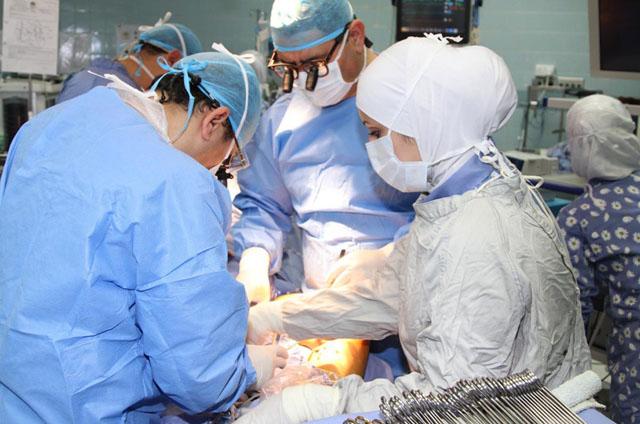You are here
Robotic scan for horses could hold promise for human health
By AP - Nov 08,2016 - Last updated at Nov 08,2016
KENNETT SQUARE, Pennsylvania — Veterinarians hope an innovative type of CT scan can advance medical care for horses and possibly be adapted for humans, eliminating the need for people to lie still inside a tube.
Robotic CT at the University of Pennsylvania’s veterinary school allows a horse to remain awake and standing as scanners on two mechanical arms move around it. The resulting high quality images, including some in 3D, for the first time offer detailed anatomical views of the animal in its normal, upright state.
That’s a huge difference from the standard CT for a horse, which requires administering anaesthesia, placing the animal on its side and manoeuvring a scanning unit around the affected area. Not all body parts fit in the machines.
Robotic CT “is much less stressful”, said Dr Barbara Dallap Schaer, medical director of Penn Vet’s New Bolton Centre. “It’s a pretty athletic event for horses to recover from general anaesthesia.”
The New York-based company 4DDI created the Equimagine system with components from robot manufacturer ABB. First unveiled at Penn last spring, 4DDI now has orders for more than a dozen units at equine facilities around the world, according to CEO Yiorgos Papaioannou.
“The word is spreading,” Papaioannou said.
At Penn, the large white robotic arms are installed at a barn at New Bolton Centre, the vet school’s hospital for large animals in the Philadelphia exurb of Kennett Square. Horses are given a mild sedative and walked into the facility for a scan that lasts less than a minute.
CT, or computed tomography, gives pictures of soft tissues that X-rays can’t. While traditional CT requires the subject to be still, this new system compensates for slight movement. Eventually, vets hope they will be able to capture CT images of a horse running on a treadmill.
The ease of imaging means more horses can get preventive scans, said Dr Dean Richardson, chief of surgery at New Bolton. As it stands, he said, many owners are reluctant to have their horses anaesthetised for a diagnostic procedure because recovery can be treacherous. As the animals emerge from unconsciousness and woozily struggle to find their footing, they risk catastrophic injury if they stumble.
“So the whole beauty of this technology, we hope, is that we’re going to be able to scan much greater numbers of patients much, much earlier in the process of things like stress-related injuries in a racehorse,” Richardson said.
For humans, the technology could be helpful when dealing with squirming children or claustrophobic adults. Doctors could also get clearer views of, say, spinal problems in a standing patient instead of relying on CT performed while the person is lying down. Penn’s translational research team has partnered with other hospitals to look at the possibilities.
“This is an interesting concept — the ability to image in your natural state,” said Raul Uppot, an assistant professor of radiology at Harvard Medical School who is not involved in the research. “It does offer something that doesn’t currently exist in the market [for humans].”
Equimagine’s base cost is $545,000, according to Papaioannou, though he said some new customers are getting the equipment in exchange for a per-scan fee. The company plans to make another version of the system for smaller animals, he said.
Penn’s system was made possible through a donor, said Dallap Schaer, noting the cost was comparable to standard CT scanners. Overall cost for the images will be less than CT scans that require anaesthesia, she said.
Dennis Charles, of Allentown, brought his horse Bert to Penn Vet for an MRI earlier this year, before robotic CT was available. The procedure required anaesthesia, and Charles said he was incredibly nervous watching a wobbly Bert regain consciousness afterward.
Last month, the horse again needed imaging but was able to have robotic CT. Charles, who described the robotic system as looking like something out of “Star Wars”, said the scans assured him Bert’s leg injury had healed.
“They get really precise images,” he said. “I think it’s a tremendous piece of equipment.”
Related Articles
The Queen Alia Heart Institute at the King Hussein Medical Centre has introduced the trans-catheter aortic valve replacement technology, Cardiologist Brig. Gen. Abdullah Omeish said Tuesday.
AMMAN — The Investment Ministry has listed an investment opportunity on its “Invest in Jordan” platform to build a medical resort in Naour,
International and local organisations are currently working on a project to improve the health and working conditions of horses and donkeys in the ancient city of Petra, according to stakeholders.














